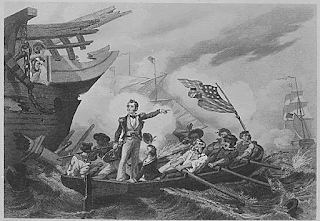Guest post by Michael Junge, CAPT, USN
Commander Alfredo Sanchez’ career ended at 0524 on August 21, 2017. A graduate of the University of Puerto Rico, Sanchez’ career included graduate studies at the US Naval War College, two chief engineer tours, and service as executive and commanding officer of USS John S McCain (DDG 56). He was, as all commanders in command of ships are, destined for promotion to Captain.
Removal followed by retirement has been the Navy’s practice for the last few decades. When commanding officers and executive officers are removed from command they progress through an administrative process that may include non-judicial punishment, an administrative recommendation for detachment for cause, a board of inquiry to show cause for retention or all, or none, of these. Given the modern approach to command removal these officer’s are digitally and irrevocably linked to whatever incident occasioned their removal and also linked to those who were removed for other reasons. Collisions, groundings, fires, misuse of alcohol, sexual harassment, assault, and rape are all linked in a melange of end of year firing lists.
It wasn’t always like this. In 1945, submarine commander Lieutenant Charles Eliot Loughlin was removed from command at Fleet Admiral Chester Nimitz’s order and court-martialed. Found guilty of intentionally sinking a Japanese aid ship, Loughlin was barred from submarines but commanded in surface ships, rising to the rank of Rear Admiral and retiring in 1968 – twenty-three years after his court-martial conviction. His was not an isolated case.
In 1985, Commander Robert Joseph Natter, while in command of USS Chandler (DD 996), passed a tug towing a barge down the Columbia River. Chandler sped by the tug and barge at a high rate of speed, swamping the barge. In 1987, the US District Court of Oregon found that USS Chandler was solely at fault for the collision by violating the safe speed rule. Natter later held commands worldwide, including Commander of the U.S. Seventh Fleet, Commander of the U.S. Atlantic Fleet, Commander of U.S. Fleet Forces Command, Commander U.S. Northern Command, and Commander-in-Chief of the NATO Western Atlantic Command. He retired in 2003 as an admiral.
In 2002, a torpedo shield door gasket failed aboard USS Dolphin (AGSS 555) while she operated off San Diego, California. Despite the abandonment, the submarine was stable and towed back to port where she underwent three years of repairs before decommissioning. Kelety promoted to captain and retired in 2008.
Our Chief of Naval Operations speaks of advocacy mentorship - and he has a point. People like Bryce Benson, Alfredo Sanchez, Sean Babbitt, Jessie Sanchez, Jana Vavasseur, and David Nartker need someone in their corner. Someone who remembers that these officers are the best of our best and that the qualities that placed them in command were not erased by a decision later judged to be in error. Their decisions were not wrong - the outcome was. Likewise, the decisions the Navy has made in these cases are not yet wrong, but the outcomes are likely to be.
Capt. Michael Junge is a U.S. Navy Surface Warfare Officer currently serving at the U.S. Naval War College. He commanded USS Whidbey Island (LSD 41) and served in amphibious assault ships, destroyers, and frigates and is the author of the forthcoming “From Pillar to Pillory: U.S. Navy Crimes of Command 1945-2015.”. The views expressed in this article are the author’s and do not necessarily reflect the views of the U.S. Naval War College, the U.S. Navy, the Department of Defense, or the U.S. government. His cat remains unhappy, but is now hopeful as he corresponds with his new friends in Washington, DC.
































